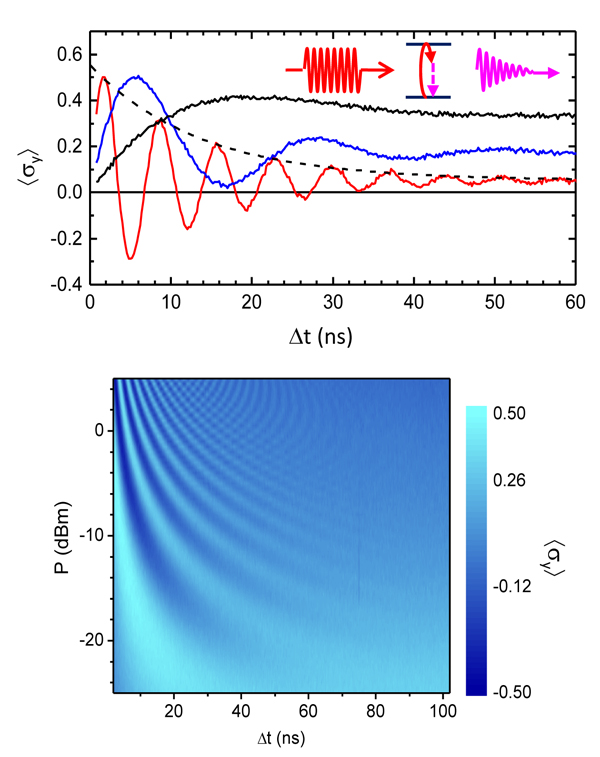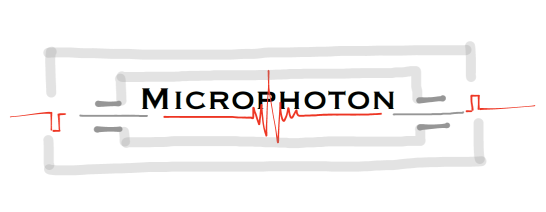REG(RHUL2): On-demand tuneable single-photon source
REG contact person: Prof. Oleg Astafiev, Royal Holloway University of London

Figure. The upper panel demonstrates normalized averaged emission from the two-level system in the transmission line excited by repeated microwave pulses of length Δt at three different pulse amplitudes. The 2D-plot on the lower panel demonstrates emissions at different powers (Y-axis) in the excitation pulses. The normalized amplitudes give directly (δy) projection of the atomic state.
On-demand tuneable single-photon sources are important for several applications, including quantum information on flying photons and metrology. The single superconducting artificial quantum systems (artificial atoms based on qubit technology) in open transmission lines (open space) are excellent candidates for making single-photon sources in the GHz range.
Superconducting qubits used for quantum computing research are now successfully applied for quantum optics in the microwave range as 'artificial atoms'. Such atoms have been recently studied and a series of fundamental quantum optical phenomena has been realized. Full controllability of the quantum systems as well as their strong coupling to a free space, resulting in highly efficient interaction with the transmission line [1], have been demonstrated. The atoms have been directly incorporated in the transmission line (e.g. flux qubit inductively coupled to the line). Manipulation and detection of the quantum states by ensemble averaged photon, which will be used as a basis for the photon source, have been achieved (see Figure).
The on-demand photon source requires significant modification of the previously used circuits [1, 2] and a series of technological and physical problems to be solved. In order to realise the tuneable on-demand photon source a new type of circuit will be developed. Namely, the atom will be coupled to a terminated coplanar line (analogue of half-space). In such geometry, the photon from the excited atom will escape in one possible direction and freely propagate in the transmission line.
The REG will work closely with NPL and other members of the consortium.
- O. V. Astafiev, A. M. Zagoskin, A. A. Abdumalikov, Yu. A. Pashkin, T. Yamamoto, K. Inomata, Y. Nakamura, and J.S. Tsai. Resonance fluorescence of a single artificial atom. Science. 327, (2010).
- A. A. Abdumalikov, O. V. Astafiev, Yu. A. Pashkin, Y. Nakamura and J. S. Tsai. Dynamics of coherent and incoherent emission from an artificial atom in a 1D space. Phys. Rev. Lett. 107, 043604 (2011).

The research within this EURAMET joint research project receives funding from the European Community's Seventh Framework Programme, ERA-NET Plus, under Grant Agreement No. 217257.
For more information, please contact the project coordinator, Dr Antti Manninen from MIKES
